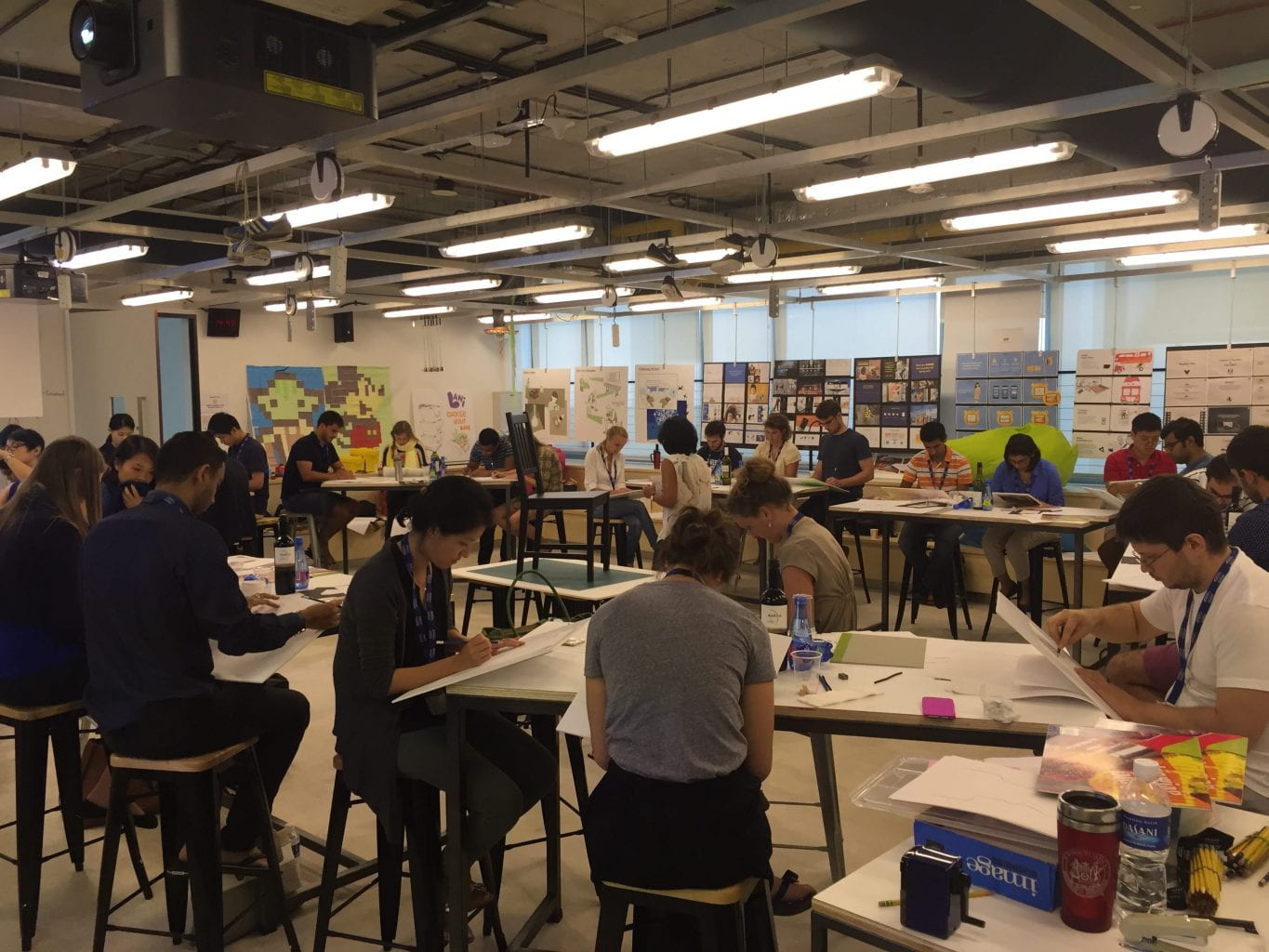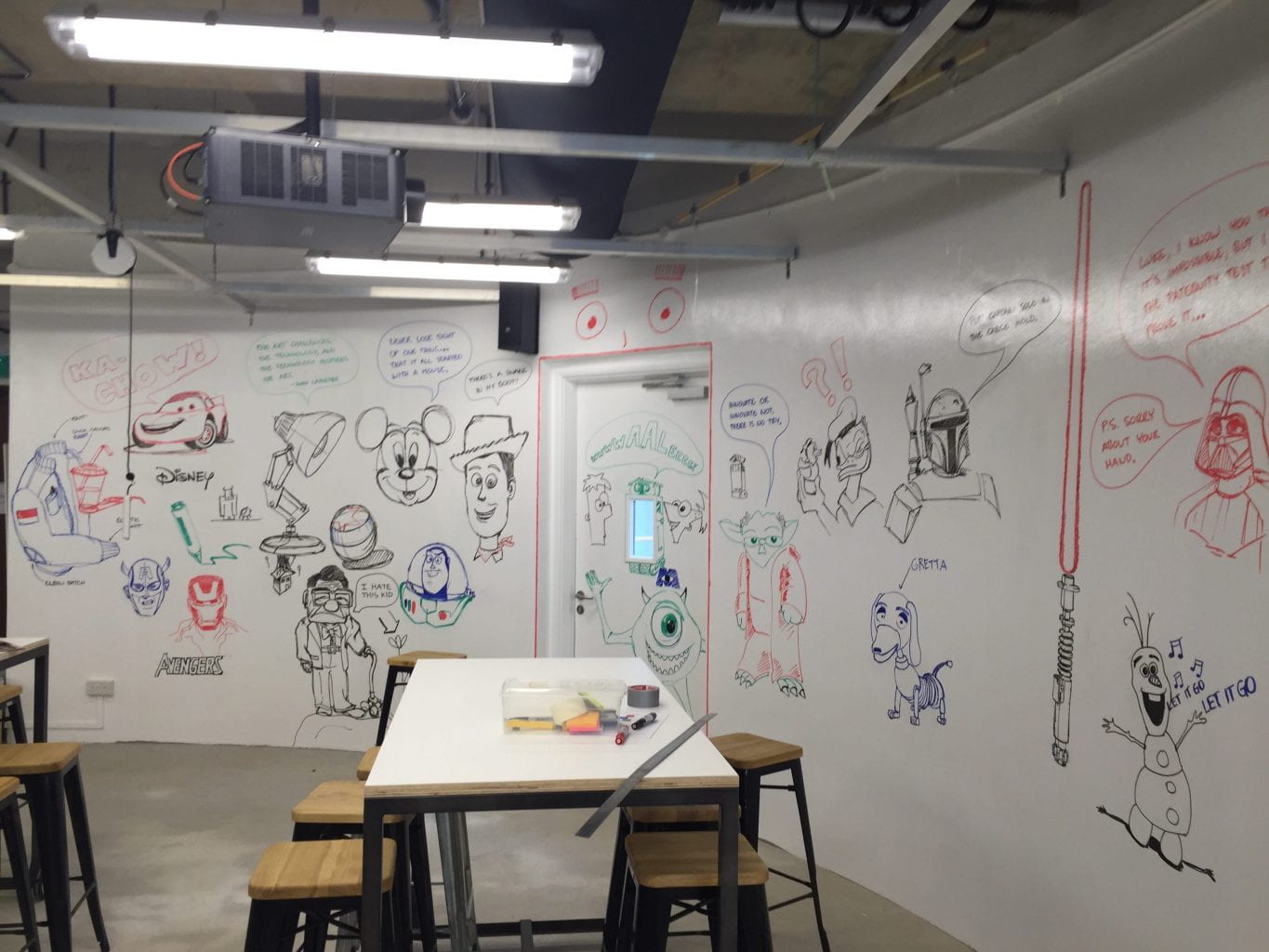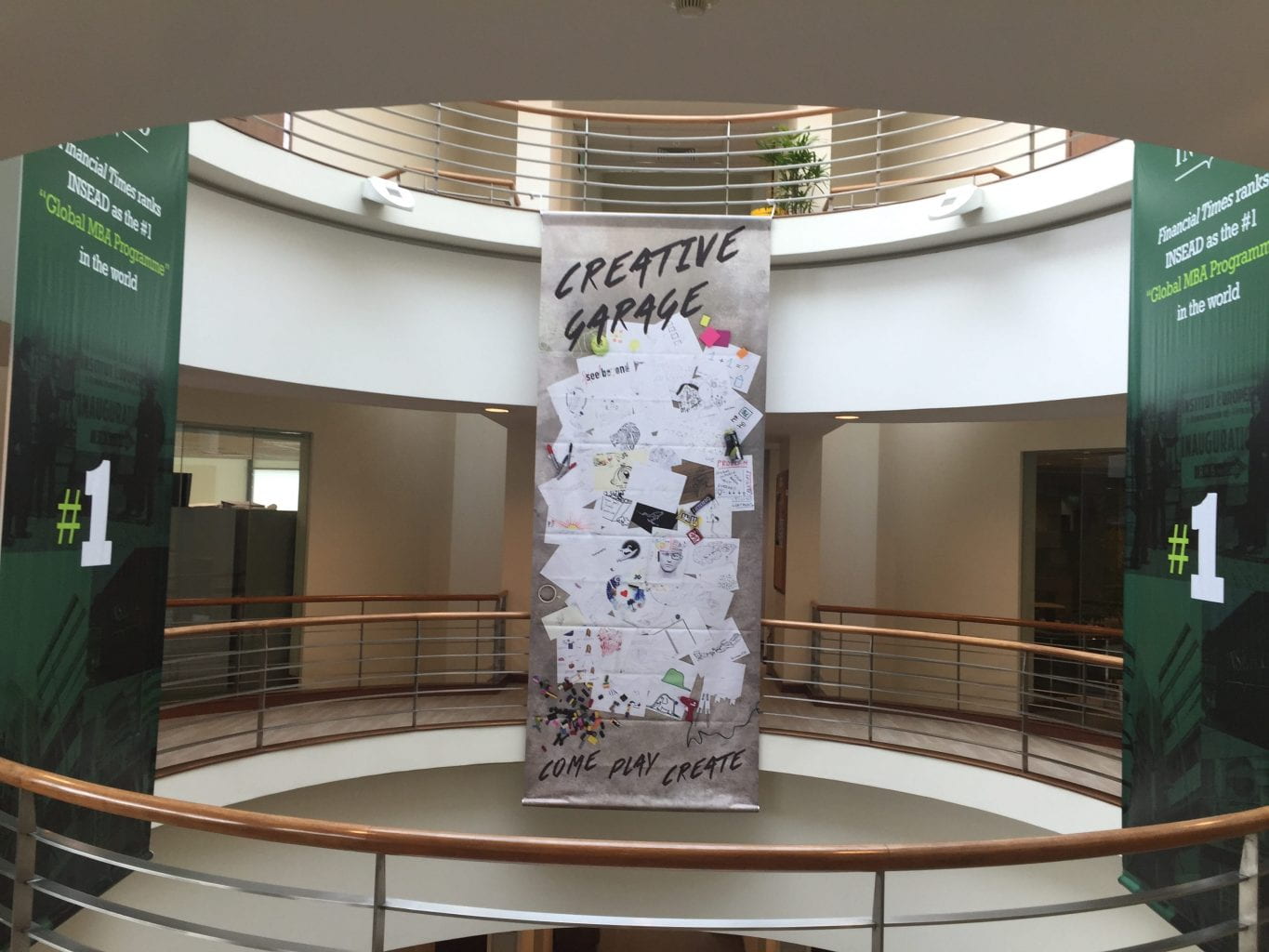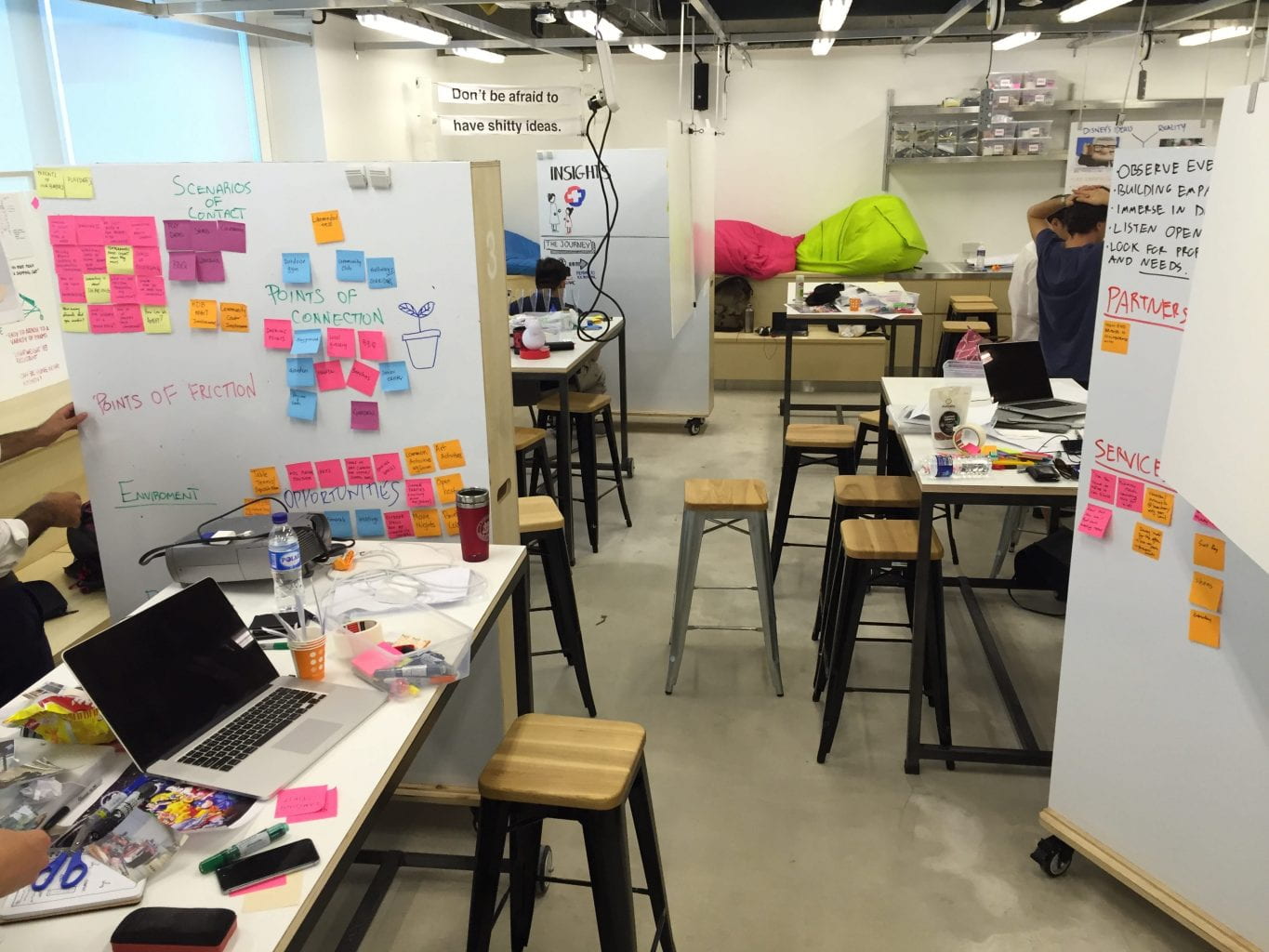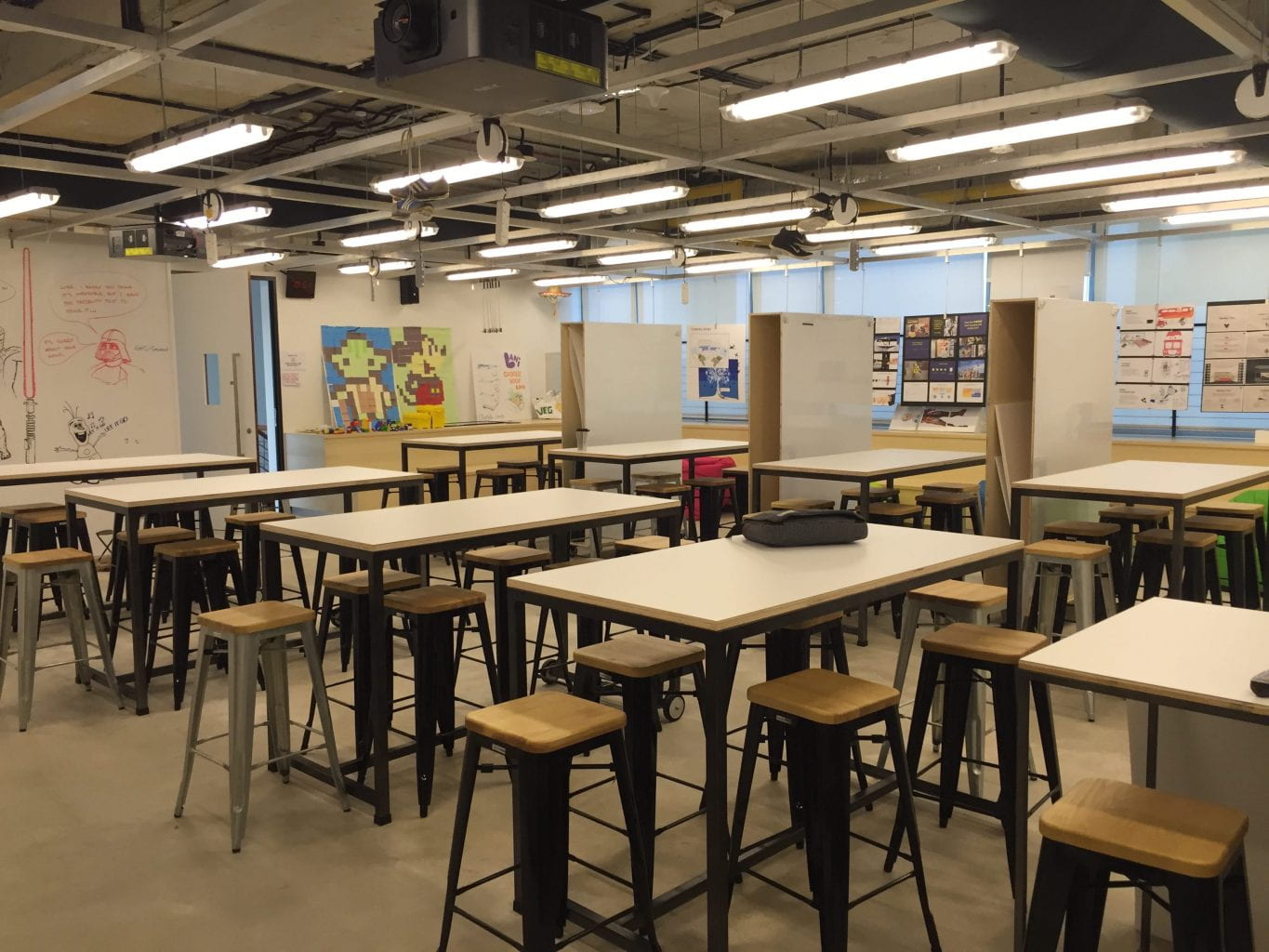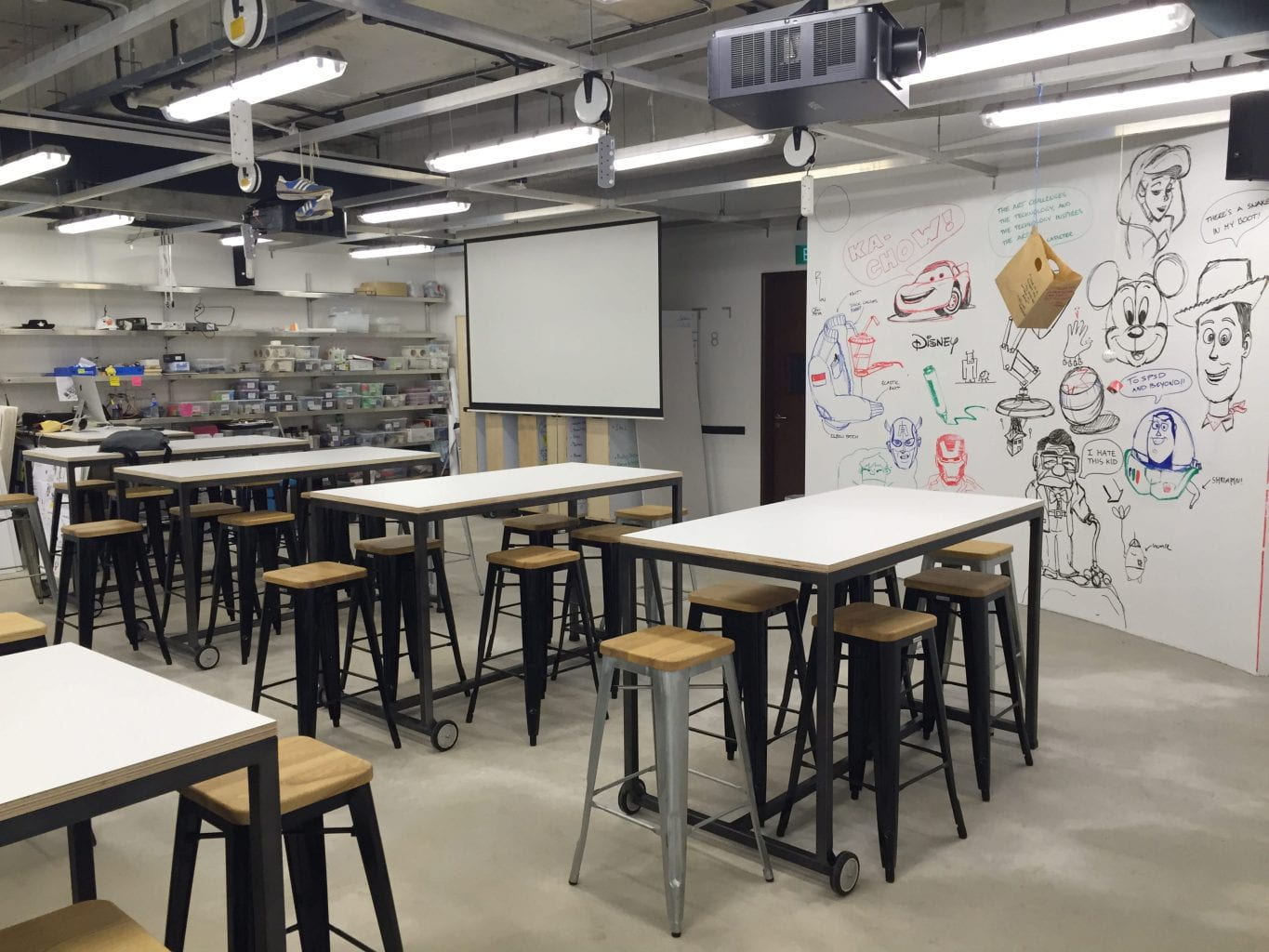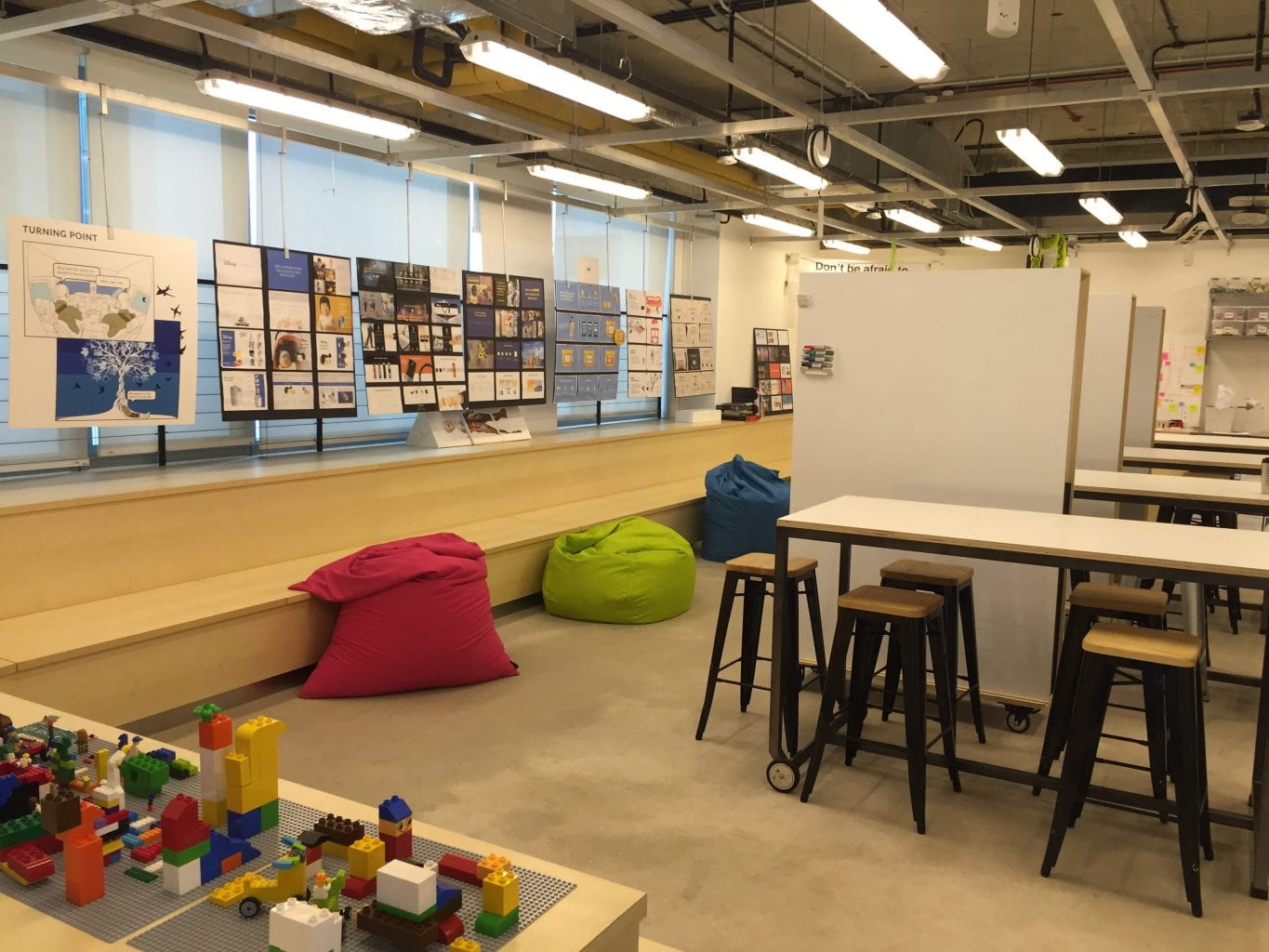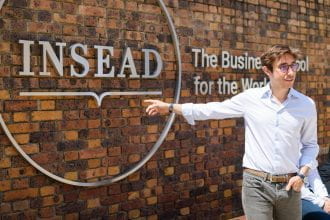On the Singapore campus, a new space called the “Creative Garage” is channelling innovation in unexpected ways — and with unexpected benefits
Enter any classroom at any business school, and you’re likely to find the following: A carpeted room with auditorium-style seating, tables affixed to the floor, neatly tucked chairs and a sturdy-looking podium.
A new space on INSEAD’s Singapore campus, however, is decidedly different. Dubbed the “Creative Garage,” this space — part classroom, part workshop, part research centre — has an aesthetic that’s more akin to a design school than business school. Its bare, concrete floors are topped with high worktables and metal stools, while its whiteboard walls are covered in colourful scribbles, drawings and notes. These design details, coupled with the presence of partition walls, bright floor cushions and power cords hanging from the ceiling, send a clear message: Here, movement is encouraged.
“This is the antithesis of classrooms in business schools,” explains Manuel Sosa, associate professor of technology and operations management, who led the charge to build the Creative Garage and partnered with design firm Eight Inc. to make it happen. “That contrast is critical. This is designed to empower people to feel different and embrace things differently.”
During the Creative Garage’s soft launch in March (it officially opened in April), Manuel put that theory to the test when he brought students from his creative thinking course to the space for five weeks. His goal was to see whether teaching students in that setting — versus a traditional classroom — would influence their performance in class. It did.
Compared to students from previous editions of the course, the students who took the class in the Creative Garage had greater energy and enthusiasm for the course content, Manuel says. They also exhibited different body language and facial expressions when working on projects, and also showed an increased level of engagement in the course. “More interestingly,” he says, “they channelled that energy into the creation of more ideas, better quality of ideas and greater variance of ideas.”
To grow, create
But why does this matter? What’s the link between creativity and business, and why should INSEAD students be concerned with it?
In a word, growth. Creativity fuels the innovation that organisations need to achieve sustainable growth, Manuel says. Therefore, it’s critical for every business leader — regardless of industry or role — to invest in developing this capability.
“Businesses can grow in many ways,” he explains. “You can grow by being very cost efficient. You can grow by acquiring other companies. But innovating is really the only way you can grow from within. A business that wants to create value can’t afford not to have this capability.”
To create value, however, business leaders have to do more than just think differently or search for novelty. They must also have a clear understanding of the purpose that’s fuelling the innovation, knowing precisely what problem they’re solving and for whom.
To emphasise that duality, Manuel tries to teach his students to “focus on the people, rather than the technology,” he says. “Developing that empathy and looking at the insides of the problem has to be coupled with creativity.”
Creativity fuelled by alumni
As Manuel explains, the Creative Garage would not have been possible without the generous support of Gary Wang MBA’02J and Heinrich Baumann MBA’72. In addition to providing the funds to sponsor the implementation of the Garage, Gary and Heinrich supported the initiatives that led to the development of the vision behind the space.
Gary helped establish the Creativity-Business Learning Platform Fund, which “was instrumental in redesigning our MBA curriculum to teach creative thinking and provided the cornerstone to develop the vision, plan, and execution of the creative garage,” says Manuel. Heinrich’s fund, the Baumann-Steiner Endowed Fund for Creativity and Business, has supported the INSEAD-Art Center partnership since it was established in 2004, “without which we would have never explored the world of design in the unique way we have done it,” Manuel says.
The Creative Garage was also developed through a unique collaboration with Eight Inc. In exchange for the firm’s help with the design of the space, INSEAD will design and deliver a company-specific programme. True to the Creative Garage’s spirit of innovation, “we are exchanging design work for business education,” Manuel says.
Innovating beyond the classroom
While the Creative Garage was originally conceived to improve the teaching of creativity at INSEAD, its potential extends well beyond the classroom. The space, Manuel says, has a “transformational force” that touches many audiences and serves many different purposes.
Research is one of the key areas that benefits from the space. Manuel is currently using the room to conduct research experiments that measure the extent to which the Creative Garage changes how creative tasks are performed. (Conveniently, the classroom located next to the Creative Garage is hosting a control group for the experiment, as it shares the same volume and floor plan as the space.)
Executive Education, meanwhile, has already hosted clients in the space to co-design curriculum for custom programmes. That, in turn, has led to the creation of a formal offering that elevates the level of customisation available to clients through executive programming.
Looking ahead, Manuel intends to use the space to connect with the larger entrepreneurial ecosystem in and around Singapore. That includes engaging with INSEADERS, a start-up incubator recently launched by INSEAD alumni that’s located across the street from the Asia campus. Manuel also envisions using the Creative Garage as a resource for fundraising or recruiting activities. For example, he is investigating whether external companies could use the space to recruit creative talent and conduct interviews in non-traditional ways.
The launch of the Creative Garage has trigged a question, he says. “Now that we have this space, what can we do at INSEAD that we couldn’t do before? Suddenly, this is helping us see doors that we couldn’t see before, and it’s opening up those doors.”
He continues, “This has the potential to help us create value in many different ways, and everybody in the INSEAD community — professors, alumni, staff and students — can help us think about how to do that. This is how big things can actually happen.”


